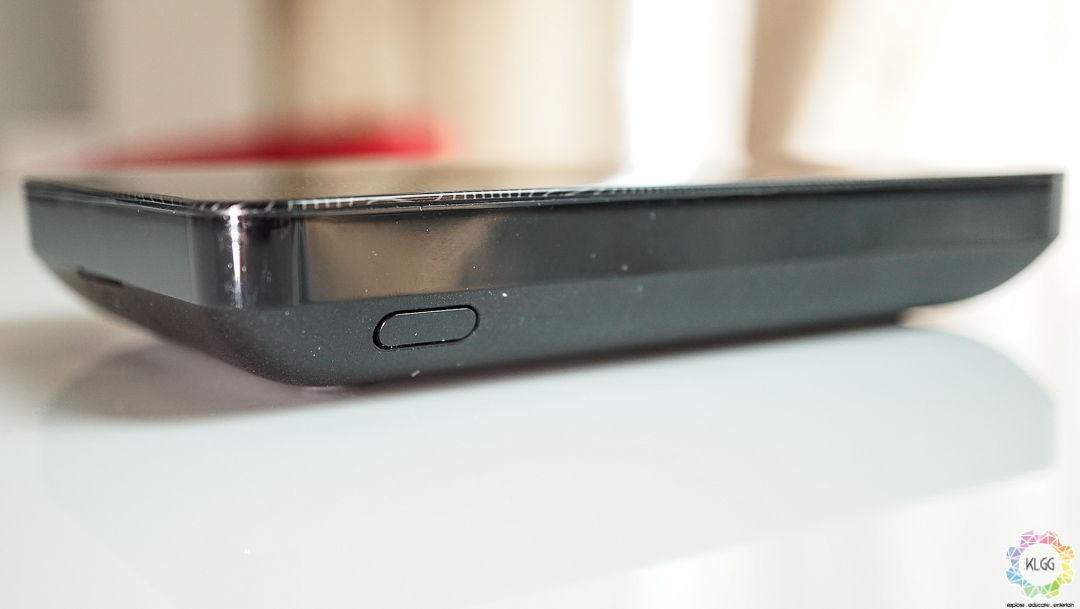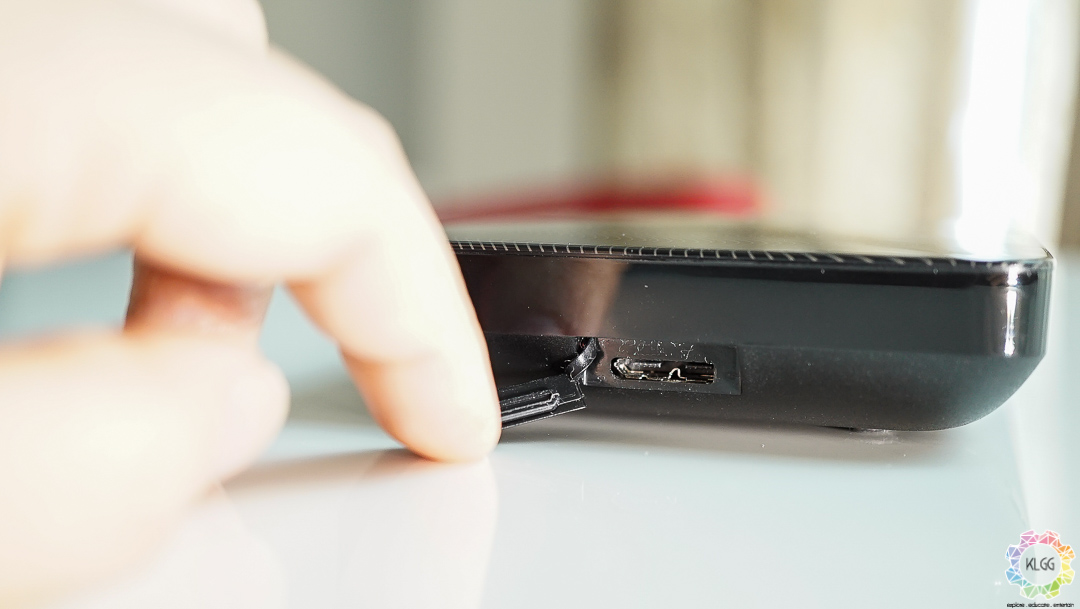Portable hard drives are, generally speaking, uncomplicated devices. You open up the box, plug them into your computer, and bam! You now have more storage space than before. At first glance, the ASUS Travelair N seems to be a standard, albeit bigger, portable hard drive. Looks can be deceiving though, as the ASUS Travelair N is not just a standard portable hard drive; it is a portable hard drive that allows you transfer content to and from it wirelessly.
Design
The first thing you’ll notice when you see the Travelair N yourself is the size. Let’s not beat around the bush here, the Travelair N is big, far bigger than any portable hard drive that I’ve come across my whole life. The huge size also means that the Travelair N is rather heavy and definitely not a device you want to carry in your hand for extended periods of time.
Size and weight aside though, the Travelair N looks like a typical portable hard drive. The top of the hard drive sports the ASUS logo with a spiral-ish pattern. At the sides of the Travelair N, you’ll find the power button, the LED indicators, the SD card slot, and the standard USB port.
Features
What differentiates the Travelair N from other portable hard drives though is the self-contained Wi-Fi network that it has, allowing it to function more as a NAS rather than a typical portable hard drive. Also, the top part of the Travelair N features NFC that allows for one-touch connection with any smart device that also has NFC. Furthermore, you can also connect the Travelair N itself to your home internet network, turning this portable hard drive into a proper NAS.
The hard disk itself has a capacity of 1TB, which is good enough in most cases. If you feel that 1TB is too little, you can slot in an SD card into the Travelair N in order to increase the storage space that the hard disk has.
Usage
Before you start using the Travelair N itself though, ASUS recommends that you charge device for eight hours. Once that’s done, I’ve decided to take the Travelair N for a spin.
First off, the wireless connectivity. As the Travelair N comes with its own Wi-Fi Network, this allows you to transfer files to and from it without actually needing an active internet connection. Connecting to the Travelair N is very straightforward as well, as all you need to do is to find the Wi-Fi Network that the Travelair N has. If you have an NFC-capable smart device like a smartphone or tablet, you can just tap the place said smart device on the ASUS logo of the hard drive and it would instantly establish a connection to the Travelair N. At any one time, up to five devices can connect to the Travelair N wirelessly. If you prefer to use the Travelair N the old fashioned way, just plug the device into an open USB port on your computer with the cable provided.
As for file transfering speeds, the Travelair N is pretty standard when connected via cable. The USB 3.0 port means that file transfers are short and sweet for an average sized file. For wireless file transfer, the Travelair N is no slouch either as I could stream a Full HD movie with onto my laptop with very little issues.
But there are a few design quirks with the Travelair N though, one of which is the hard drive’s reliance on ASUS’s own AiDrive app. If you intend to properly setup the device with passwords or an internet connection, you can only do so via the AiDrive app. All of these settings cannot be accessed when you connect the drive to the PC, which is rather puzzling to me.
Another weird quirk of the Travelair N is that it when the hard drive is powered on, it cannot be accessed via a USB cable. I’m not sure if this is a conscious design decision, but the inability to use the Travelair N as a normal portable hard drive when the device is on is rather annoying.





